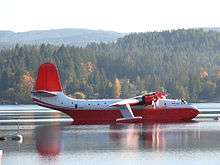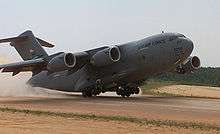Class rating

An example of a single engine land class aircraft, the ubiquitous Cessna 172
In aviation, a class rating is an allowance to fly a certain group of aircraft that require training common to all aircraft within the group. A type rating is specified if a particular aircraft requires additional specialized training beyond the scope of initial license and aircraft class training. What aircraft require a type rating is decided by the local aviation authority. Almost all single engine piston (SEP) or multi engine piston (MEP) single pilot aircraft can be flown without a type rating, but are covered by a class rating instead.
There are seven categories of aircraft, which may be further subdivided into two or more classes:
- airplane category
- single-engine land class
- multi-engine land class
- Multi-engine class aircraft are more commonly known as "multis," and their pilots are called "multi pilots" or "multi-engine pilots."
- Pilots of larger multi-engine aircraft are sometimes called transport pilots, although mostly in the realm of military aviation (see the article on military transport aircraft). The term transport pilot can be ambiguous in civil aviation, since the Airline Transport Pilot License is a very specific civil qualification.
- single-engine sea class - Pilots of all sea class aircraft are usually called "seaplane pilots" or "float-plane pilots"
- multi-engine sea class
- rotorcraft category
- helicopter class
- gyroplane class
- powered lift category
- glider category
- lighter than air category
- powered parachute category
- powered parachute land class
- powered parachute sea class
- weight-shift-control aircraft category
- weight-shift-control aircraft land class
- weight-shift-control aircraft sea class
Gallery
 A Mars water bomber, one of the largest multi-engine sea-class aircraft
A Mars water bomber, one of the largest multi-engine sea-class aircraft An airship class aircraft in the aerostat category, a Zeppelin NT
An airship class aircraft in the aerostat category, a Zeppelin NT- An example of a glider class aircraft, a Schweizer SGS 2-33
- An example of a rotorcraft class aircraft, a CH-149 Cormorant helicopter
 An example of a very large multi-engine class aircraft, a C-17 Globemaster III
An example of a very large multi-engine class aircraft, a C-17 Globemaster III An example of a jet fighter aircraft, a CF-18 Hornet
An example of a jet fighter aircraft, a CF-18 Hornet
Notes
References
This article is issued from
Wikipedia.
The text is licensed under Creative Commons - Attribution - Sharealike.
Additional terms may apply for the media files.